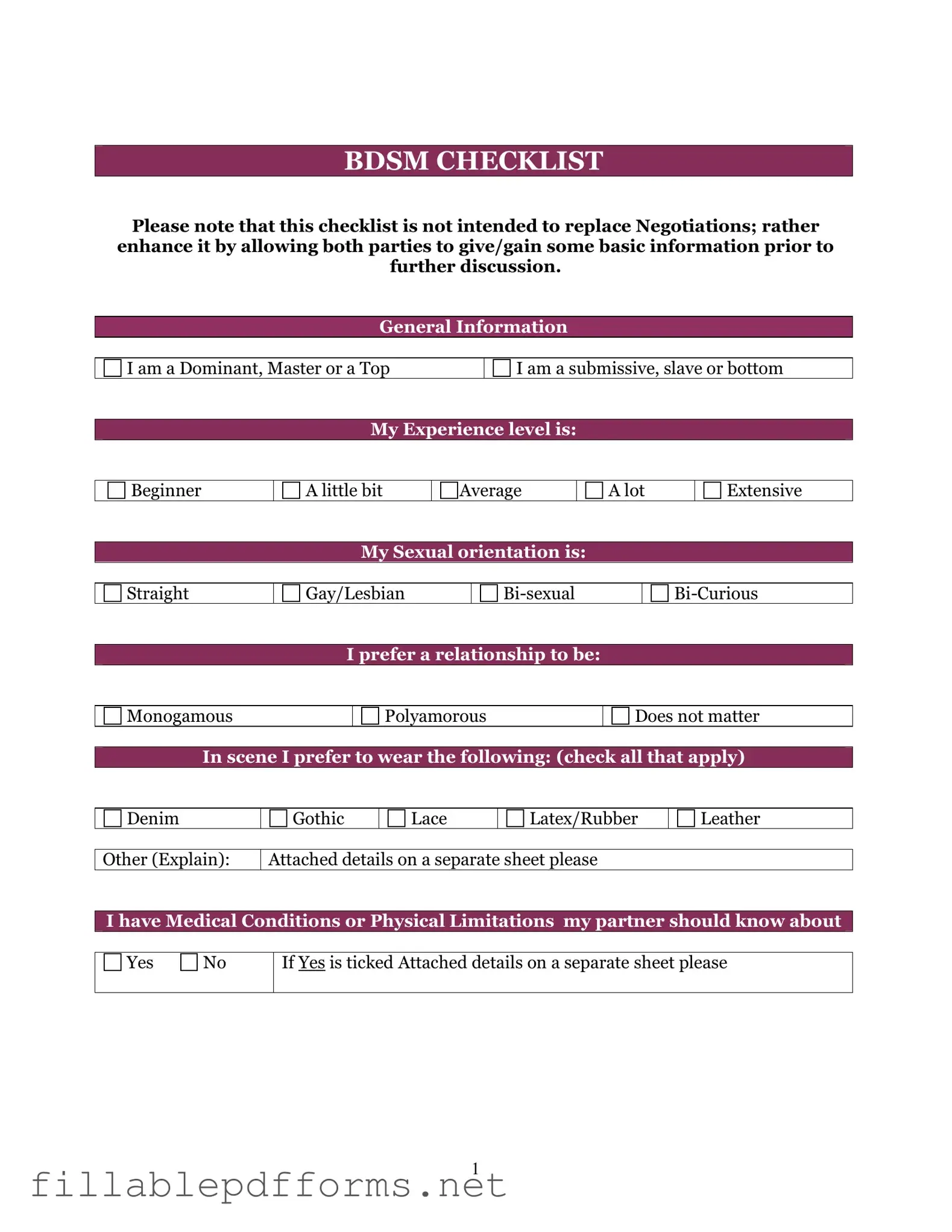Bdsm Checklist PDF Template
The BDSM Checklist form serves as a valuable tool for individuals exploring the dynamics of BDSM relationships. This form helps participants articulate their desires, boundaries, and interests, fostering open communication and mutual understanding. By utilizing the checklist, partners can create a safer and more consensual experience, ensuring that everyone involved feels respected and heard.
Launch Editor Here
